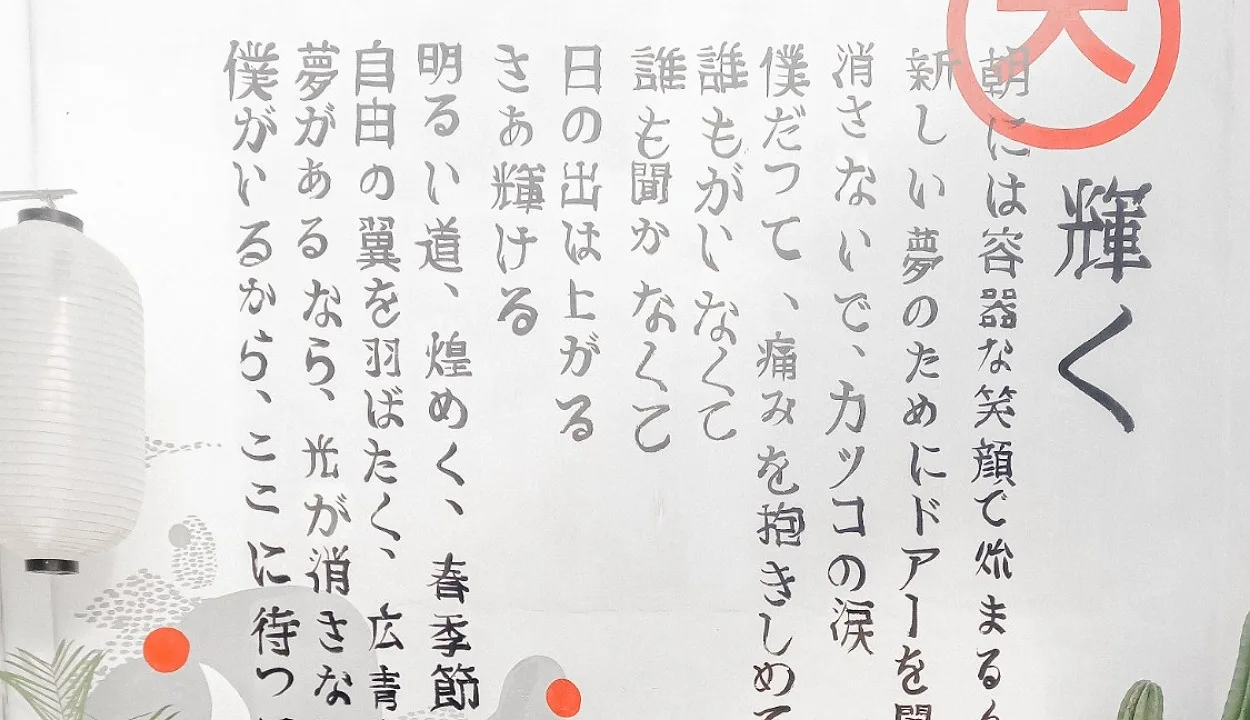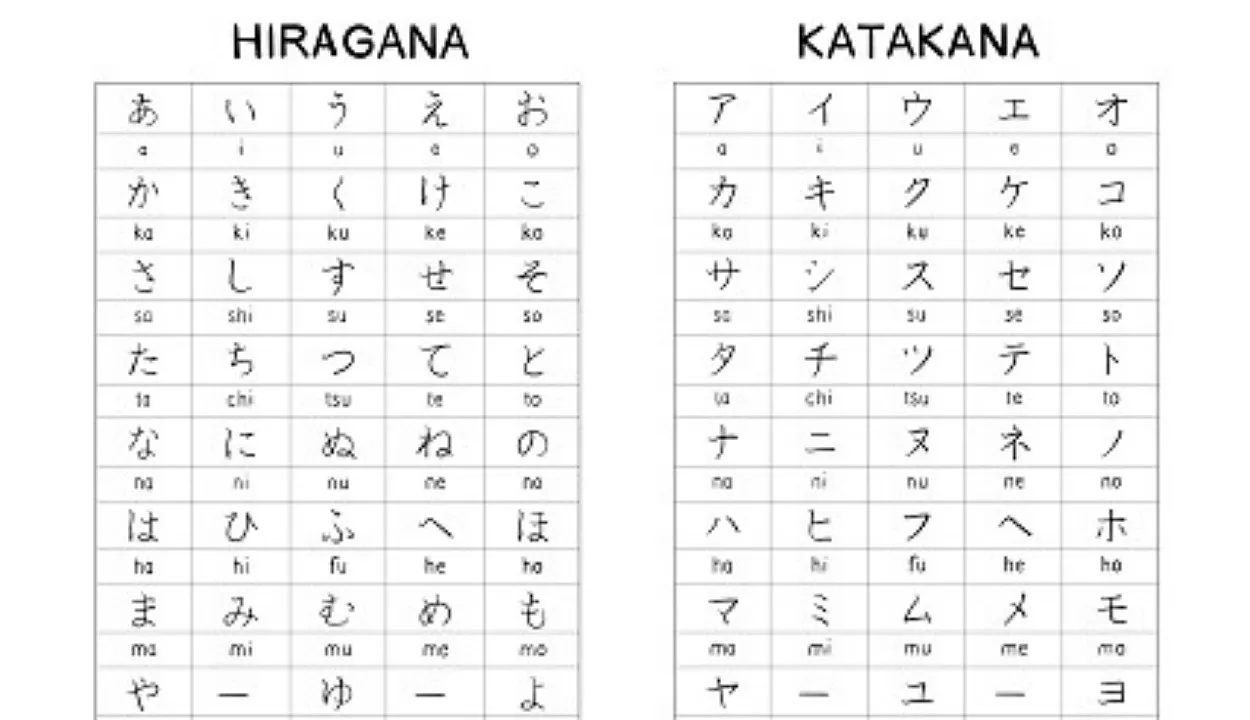The three different alphabets used by the Japanese language—Hiragana, Katakana, and Kanji—are used to write not just one but three different words.
One of the most challenging writing systems in the world is that of the Japanese. It uses the syllabic character types Hiragana and Katakana and the logographic character type Kanji.
Kanji, Hiragana, and Katakana are usually combined in written sentences. You may learn more about the differences between the three from this article.
I’ll describe the various character sets in this post to help you understand what each sort of character is for and when each is commonly used.

Hiragana
Japanese syllabic writing is known as Hiragana. Together with Katakana and Kanji, it is one of the three writing systems used in the Japanese language.
Hiragana is utilized to represent native Japanese words and grammatical elements and give kanji characters their reading pronunciation.
The following list of Hiragana words and their definitions:
- あのね (anone) – well, you know
- ありがとう (arigatou) – thank you
- いただきます (itadakimasu) – a phrase said before eating.
- おはよう (ohayou) – good morning
- かわいい (kawaii) – cute
- ごめんなさい (gomennasai) – I’m sorry
- さようなら (sayonara) – goodbye
- ちょっと (chotto) – a little bit
- なんでもない (nandemonai) – never mind, it’s nothing
- わたし (Watashi) – I, me
Grammatical particles, or words that denote the relationship between words in a sentence, are also written in Hiragana.
Many Hiragana words are used in ordinary speech in addition to these fundamental words and particles, such as greetings, expressions of appreciation or regret, and words to describe persons, places, and objects.
Hiragana is the basis for reading and writing Japanese words; hence learning it is a prerequisite for anyone interested in learning the Japanese language.
Katakana

Foreign words, names, and technical terminology in Japanese are represented using the syllabic writing system known as Katakana. Together with Hiragana and Kanji, it is one of the three writing systems used in the Japanese language.
Characters written in Katakana are typically more angular and boxy in shape than those written in Hiragana.
These words in Katakana, along with their definitions:
- アイスクリーム (aisukuriimu) – ice cream
- ビール (biiru) – beer
- コーヒー (koohii) – coffee
- キャンプ (kyanpu) – camping
- グラス (gurasu) – glass
- ホテル (hoteru) – hotel
- ピザ (piza) – pizza
- タクシー (takushii) – taxi
- ユーモア (yuumoa) – humor
- レストラン (resutoran) – restaurant
Katakana also represents the sounds of foreign names and words incorporated into Japanese.
Onomatopoeic words, or words that mimic the sounds they describe, are also written in Katakana in addition to these foreign words and names.
Onomatopoeic terms in Katakana include, for instance:
- ガラガラ (garagara) – rattling or clattering sound
- ドキドキ (dokidoki) – heartbeat or excitement
- グルグル (guruguru) – spinning or swirling motion
- ピカピカ (pikapika) – sparkling or shining
- ズキズキ (zukizuki) – throbbing or pulsing pain
Everyone interested in learning Japanese should start with learning Katakana, the basis for reading and writing foreign words and names in Japanese.
Kanji
The Japanese language uses the Kanji writing system, which comprises Chinese symbols that have been adopted and modified for use in the Japanese writing system.
Together with the hiragana and katakana syllabaries, kanji characters represent words, phrases, or concepts and are essential to written Japanese.
In the fifth century AD, Kanji was brought to Japan from China. The characters represented Japanese words and concepts over time, and new characters were developed to fill in the blanks where no equivalent Chinese character was available.
- Although thousands of Kanji characters are used, the Jouyou Kanji, a smaller group of frequently used characters, is utilized in most Japanese literature.
- The Japanese government chose the 2,136 characters that make up this set of standard Kanji characters in 1981 for widespread use in Japan. Depending on their context and the other characters they are used with, kanji characters can be read in various ways.
- Each character has a minimum of one “on” reading based on how it was spoken in Chinese and a maximum of one or more “kun” readings based on how it was pronounced in Japanese.
- Understanding Kanji, used in everything from textbooks to street signs to newspapers, is crucial to acquiring the Japanese language. It enables the learner to read and write various words and concepts.
Although learning Kanji can be difficult, various tools like textbooks, flashcards, and internet resources can assist students in mastering this intricate writing system.
In contrast, the character-based writing system known as Kanji, used to represent words, sentences, and concepts in Japanese is composed of Chinese characters.
Difference
Three writing systems are used in the Japanese language: Hiragana, Katakana, and Kanji. Each has special qualities and applications.
Hiragana is a 46-character syllabic writing system used to represent the sounds of the Japanese language.
For native Japanese nouns and grammar parts such as particles, verb and adjective endings, and other suffixes, Hiragana is utilized. Kanji characters are combined with curved Hiragana characters in Japanese writing.
Another syllabic writing system is Katakana, which has the same 46 characters as Hiragana but is written more angularly.

- Loanwords from other languages, such as English, as well as onomatopoeic words and technical phrases, are typically written in Katakana. While Hiragana is usually used for grammar marking, Katakana is more frequently used for phonetic notation.
- Japanese writing uses Chinese characters called Kanji, which have been adopted and modified for this purpose. Together with Hiragana and Katakana, kanji characters, which stand for words, phrases, or concepts, are essential to written Japanese.
- Depending on their context and the other characters they are used with, kanji characters can be read in various ways.
- Each character has a minimum of one “on” reading based on how it was spoken in Chinese and a maximum of one or more “kun” readings based on how it was pronounced in Japanese.
| The following are some illustrations of grammatical particles written in Hiragana: | Typical Japanese words written in Katakana include the following: |
| を (wo) – object marker | スポーツ (supootsu) – sports |
| が (ga) – subject marker | ファッション (fasshon) – fashion |
| に (ni) – indicates direction or location | パーティー (paatii) – party |
| で (de) – indicates the location where an action takes place | ショッピング (shoppingu) – shopping |
| へ (e) – indicates direction or destination | インターネット (intaanetto) – internet |
| と (to) – indicates a connection or comparison | オフィス (ofisu) – office |
In conclusion, both Hiragana and Katakana are syllabic writing systems used in Japanese, with Katakana used for loanwords and technical terminology and Hiragana used for native Japanese words.
Final Thoughts
- Hiragana and Katakana are two different sets of Japanese syllabaries or alphabets.
- They do not depict distinct meanings the way Kanji do.
- These are phonetic symbols for one of the 46 different syllables.
- Whereas Katakana is more block-like and crisp, Hiragana is curled like English cursive.
- This is because Hiragana originated from the cursive script (ssho) form of the Kanji, but Katakana is based on Chinese characters’ regular script (kaisho) form.
- Moreover, Hiragana grows from the full Kanji, whereas Katakana does so from individual Kanji.
- Hiragana is used to write various grammatical and function terms, including particles.
- Only correct terms should be written in Hiragana while writing in Japanese, especially in a formal situation.
Related Articles
- Differences Between The Metric And Standard Systems (Discussed)
- Photosynthesis vs. Cellular Respiration (Similarities And Differences)
- What’s The Difference Between A Mole Fraction And PPM? How Do You Convert Them? (Explained)
- What Is The Difference Between Frequency And Angular Frequency? (In-Depth)

